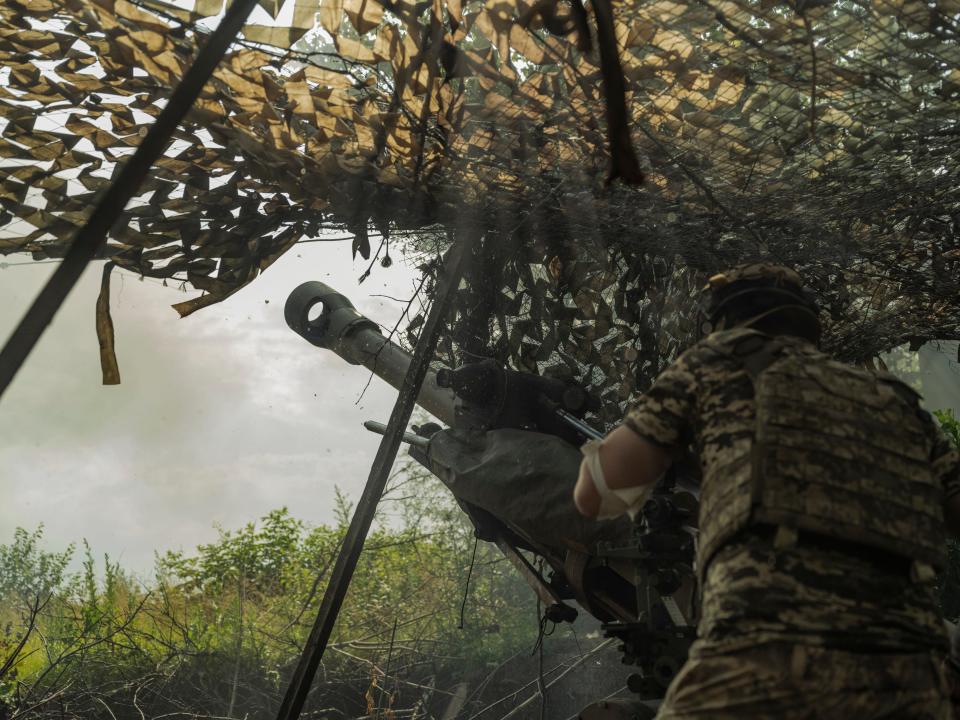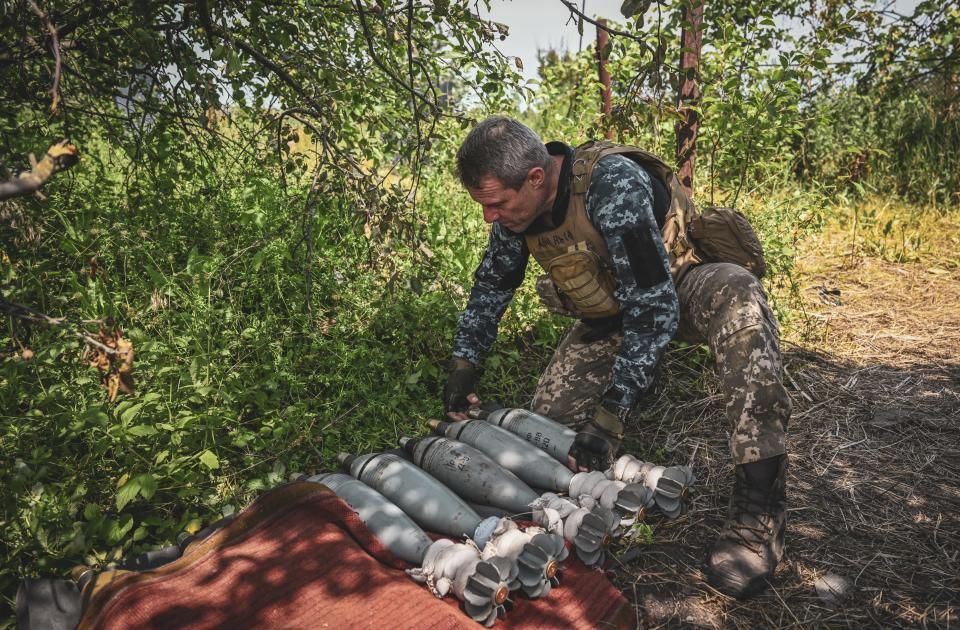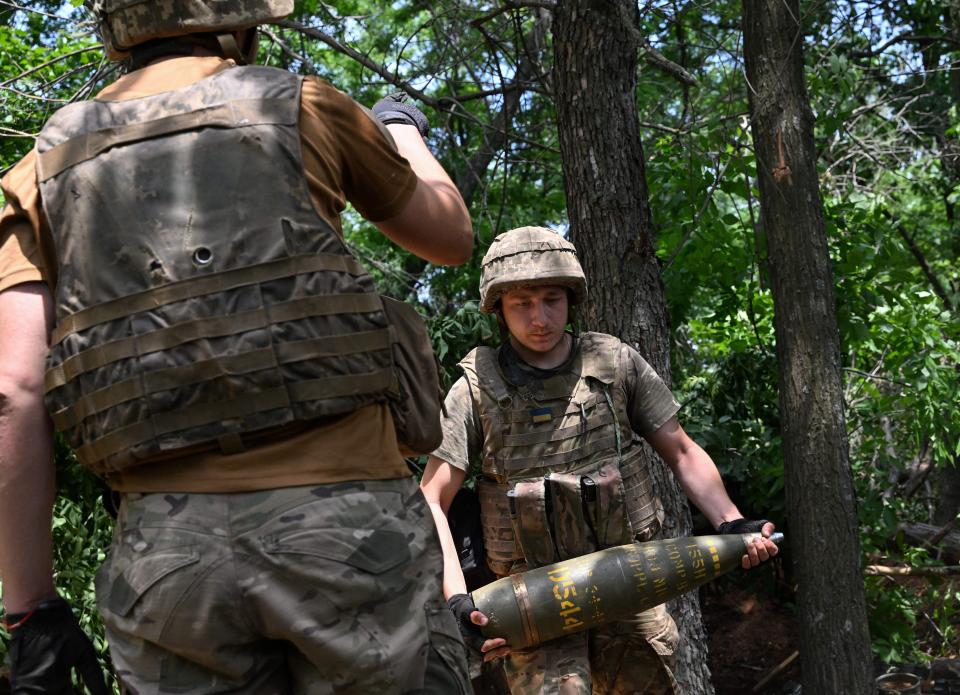Angered by counteroffensive complaints, Ukraine's top general says the expected mission is 'not feasible at all' with just the weapons his army has now
Ukraine is now several weeks into its long-awaited counteroffensive.
But Valerii Zaluzhnyi, Kyiv's top general, doesn't want to hear complaints that it's moving too slow.
"This is not a show," he told the Washington Post. "Every day, every meter is given by blood."
Ukraine has fended off Russia's advances for more than 16 months, and it's now several weeks into its long-awaited counteroffensive. The pace is grinding in some sectors of the front, but Kyiv's top general says he doesn't want to hear complaints it's going too slow.
Gen. Valerii Zaluzhnyi, the commander-in-chief of Ukraine's Armed Forces, told the Washington Post that it "pisses" him off to hear commentary that his counteroffensive operations are moving slower than anticipated. Kyiv's military is currently undergoing several offensive maneuvers along the front lines in the eastern and southern regions and has made small — but, at times, costly — territorial gains in the process.
Liberating Russian-occupied land means clearing obstacles fortifications, including anti-tank ditches, "dragon's teeth" anti-vehicle barricades, minefields, and trench labyrinths and breaking through Moscow's layered defensive lines. Breaching these many obstacles are dangerous and painstaking operations, especially since Ukraine doesn't appear to have all the capabilities that other militaries executing this kind of mission would normally employ.
"This is not a show," Zaluzhnyi said in the recent interview with the Post, which was published on Friday. "It's not a show the whole world is watching and betting on or anything. Every day, every meter is given by blood."

To be successful with the assault and conduct the kind of operations some expect from Kyiv's forces, specifically a fast, hard-hitting offensive, Ukraine's "Iron General" says he needs more advanced weaponry from Kyiv's Western military partners. "Without being fully supplied, these plans are not feasible at all," Zaluzhnyi noted. "But they are being carried out. Yes, maybe not as fast as the participants in the show, the observers, would like, but that is their problem."
He argued that NATO doctrine calls for neutralizing enemy air power and securing air superiority before conducting a ground-offensive, but Ukraine doesn't have the weapons to compete with Russia in the air.
"The enemy is using a different generation of aviation," Zaluzhnyi told the Post. "It's like we'd go on the offensive with bows and arrows now, and everyone would say, 'Are you crazy?'"
The general also pointed out that in the artillery fight, Ukrainian forces are being outshot ten times over.
Before Ukraine's counteroffensive began earlier this summer, Kyiv spent months building up a inventory of valuable heavy weaponry from the US and other NATO partners, weapons like advanced tanks, infantry fighting vehicles, and armored personnel carriers that complemented a steady procurement of missiles, ammunition, artillery, air-defense systems, mine-clearing equipment, and more.
Earlier this week, the Pentagon announced a new $500 million security assistance package for Ukraine, pushing the total dollar amount for all military aid provided by the US to the eastern European country to a whopping figure of more than $40.5 billion since Russia launched its full-scale invasion in February 2022.

Ukrainian officials have indicated that the military still needs to boost its long-range strike capabilities so it can hit Russian positions in occupied territory that are deep behind the front lines. One such weapon Ukraine wants is the Army Tactical Missile System, or ATACMS, which have a range of nearly 200 miles and can be fired from Ukraine's existing inventory of US-provided High Mobility Artillery Rocket System (HIMARS).
The Biden administration has long been reluctant to sign off on ATACMS for Ukraine, despite growing pressure from lawmakers and others, but The Wall Street Journal reported on Thursday that there now appears to be movement toward providing these weapons. When asked during a Thursday briefing about ATACMS, Pentagon Press Secretary Air Force Brig. Gen. Pat Ryder told reporters that he has nothing to announce and isn't "aware of any imminent decisions as it relates" to the weapon.
Chairman of the Joint Chiefs of Staff Gen. Mark Milley said at an event Friday that "these things are on the table," but noted there's been no decision.
ATACMS would extend Ukraine's long-range strike capabilities beyond the reach of its UK-provided Storm Shadow cruise missiles, which have lately been celebrated by officials for their "significant" battlefield impact and success.

Another missing component of the Ukrainian counteroffensive is airpower. A much-sought item long on Ukraine's weaponry wishlist is American F-16 fighter jets. The Biden administration has already approved the export of F-16s by allies to Ukraine, but the details and timeline surrounding training and delivery remain relatively cloaked in mystery. It may still be some time before Ukraine can get its hands on these assets.
Armed with the right missiles, these aircraft could help support Ukraine's air defenses and inflict damage on Russian positions at range. US officials have said that the training program is being led by Denmark and the Netherlands and should begin somewhere in Europe before the end of the year.
Meanwhile, NATO Secretary General Jens Stoltenberg said at a Thursday press conference that he expects new announcements from allies on security assistance to Ukraine at the military alliance's upcoming summit in Lithuania.
"We'll also agree a multi-year program to help Ukraine," as well as support moves toward NATO and facilitate increased interoperability with NATO, Stoltenberg said. "So we just need to continue to support Ukraine and ensure that Ukraine prevails as a sovereign independent nation in Europe."
Read the original article on Business Insider

